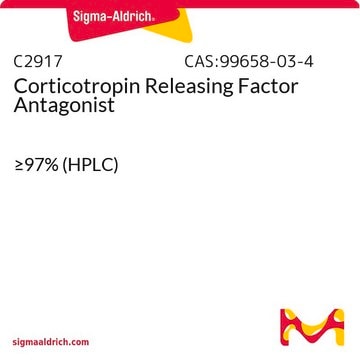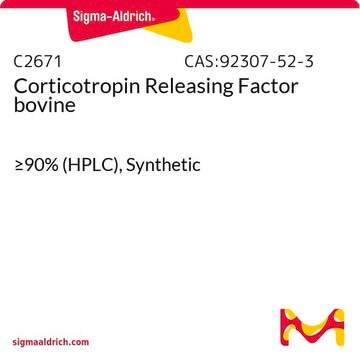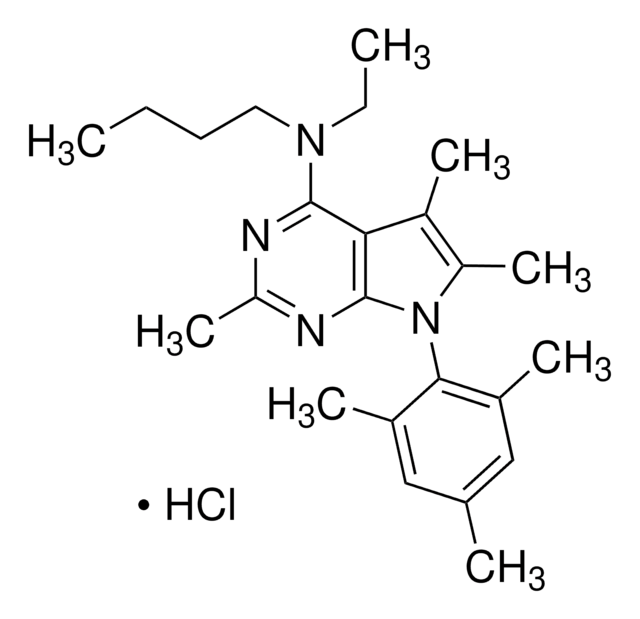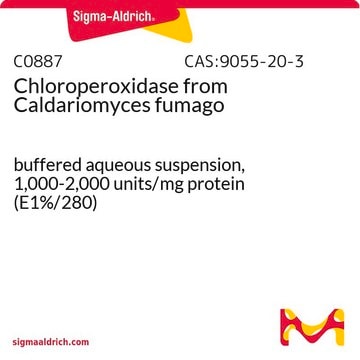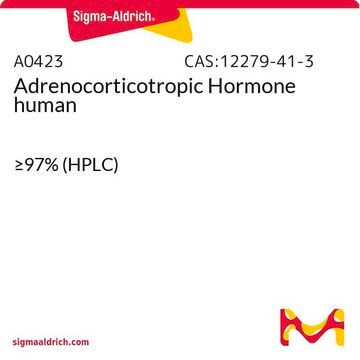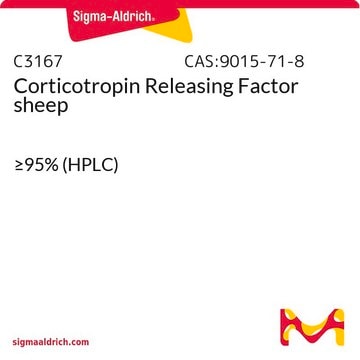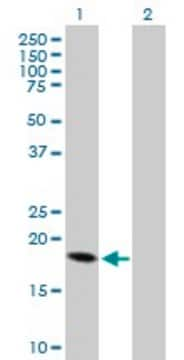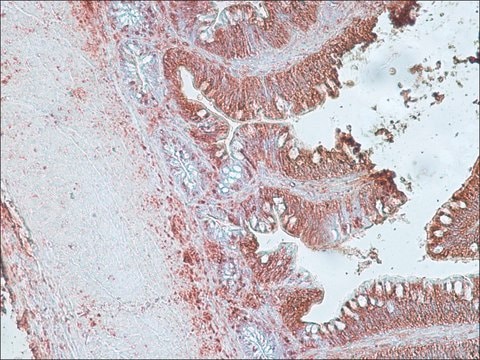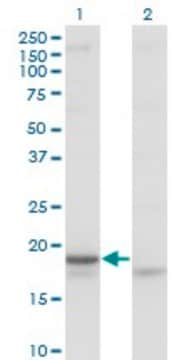C3042
Corticotropin Releasing Factor human, rat
≥95% (HPLC), powder
Synonym(s):
CRF, CRH
About This Item
Recommended Products
biological source
human
rat
Quality Level
assay
≥95% (HPLC)
form
powder
mol wt
4757.45
storage condition
(Keep container tightly closed in a dry and well-ventilated place)
technique(s)
activity assay: suitable
solubility
water: 1.00-1.04 mg/mL, colorless
UniProt accession no.
storage temp.
−20°C
InChI key
VXFVFWFSJFSXHN-FAUHKOHMSA-N
Gene Information
human ... CRH(1392)
Looking for similar products? Visit Product Comparison Guide
Amino Acid Sequence
General description
Research area: Neuroscience
Application
- as a component in Dulbecco′s modified eagle medium (DMEM) for incubating lung explants
- as a component in serum-free complete medium for isolation and culturing of fetal distal lung epithelial cells
- in the synthesis of the corticotropin-releasing factor(CRF)-TAMRA 1 mixture
- in chronic intracerebroventicular administration, to study its effect on hypoxia in hippocampus
Biochem/physiol Actions
Other Notes
antibody
Storage Class
11 - Combustible Solids
wgk_germany
WGK 3
flash_point_f
Not applicable
flash_point_c
Not applicable
ppe
Eyeshields, Gloves, type N95 (US)
Certificates of Analysis (COA)
Search for Certificates of Analysis (COA) by entering the products Lot/Batch Number. Lot and Batch Numbers can be found on a product’s label following the words ‘Lot’ or ‘Batch’.
Already Own This Product?
Find documentation for the products that you have recently purchased in the Document Library.
Customers Also Viewed
Our team of scientists has experience in all areas of research including Life Science, Material Science, Chemical Synthesis, Chromatography, Analytical and many others.
Contact Technical Service
